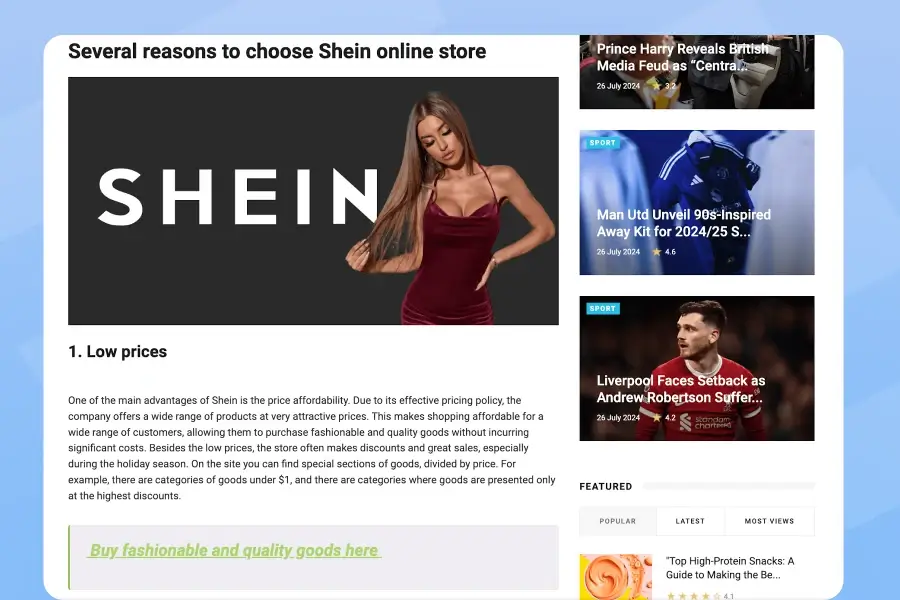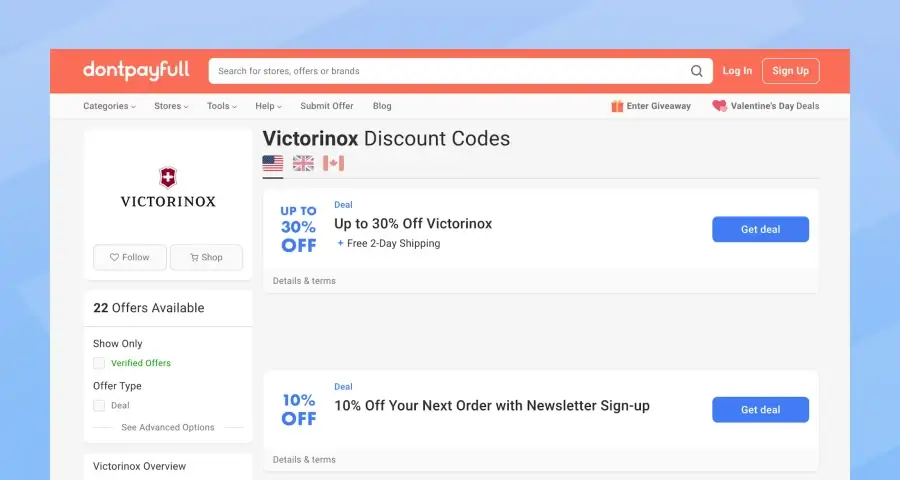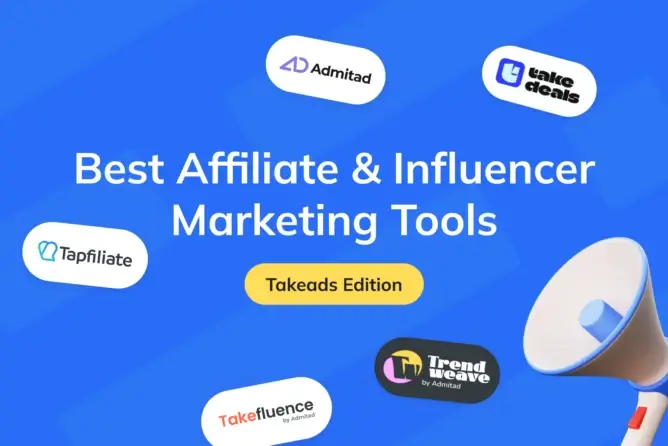How to monetize commerce content websites in 2025? A comprehensive guide by Takeads

In this article
What revenue streams should you use?
1. Affiliate marketing in 2025
How do you pick the best affiliate partners?
Where should you put affiliate links?
How do you optimize and scale?
Spotlight: What makes Takeads stand out for commerce content?
What is Takeads and how does it work?
Benefits of Takeads for publishers:
Illustrative examples – how different sites use Takeads :
Comparison of Takeads with key affiliate monetization platforms
2. Display advertising
Ad networks vs. direct sales
Ad formats and placement
3. Sponsored content and brand partnerships
Defining sponsored opportunities
Key considerations
4. Subscription models and memberships
Types of subscription implementations:
5. Digital product sales
What best practices ensure long-term success?
Create trustworthy, high-quality content
Optimize affiliate link placement & UX
Diversify merchant and monetization sources
Leverage technology and automation
Focus on SEO and AEO to get quality traffic
Keep content updated
Monitor performance and adjust
Continual optimization is key
Stay within legal and ethical guidelines
User experience is paramount
Conclusion
FAQ on increasing revenue from monetization with Takeads
Monetizing a content website in 2025 involves leveraging your audience and content to generate revenue.
In 2025, content publishers – from personal bloggers and niche site owners to news platforms and tutorial hubs – must adopt a unified, data-driven approach to monetization.
Below, you’ll find five key strategies, broken into detailed steps, plus real-world examples and media suggestions to help you build lasting, diversified income streams.
What revenue streams should you use?
Content websites can mix and match multiple revenue streams. The best approach depends on your site’s niche, audience behavior, and content type.
Mixing revenue methods keeps your site resilient when market conditions or algorithms shift. The right combination depends on:
- Niche and audience type: Tech gadget reviewers need different approaches than recipe blogs or financial newsletters.
- Content format: Listicles, long-form tutorials, video reviews, and podcasts each favor certain monetization methods.
- Traffic volume and engagement: High-volume sites can lean into display ads, while deep-dive content benefits more from subscriptions and premium products.
Here’s a snapshot of the five core revenue streams: affiliate marketing, display advertising, sponsored content, subscription models, and digital product sales.
Let’s explore them one by one in detail.
1. Affiliate marketing in 2025
Affiliate marketing remains one of the most scalable, performance-based revenue streams for sites focused on products and services. When done well, it aligns reader intent with solutions, creating a win-win. Here’s how to get the most out of this model:
How do you pick the best affiliate partners?
Selecting partners that match your audience profile is critical:
- Direct merchant programs: Individual retailers like Amazon Associates, eBay Partner Network, or niche software services often offer straightforward signups and brand recognition. However, cookie durations (the time window for earning credit) can be short, and commission rates vary widely – from 1% on consumer goods to 30%+ for digital software.
- Affiliate networks: Aggregators such as Impact, Awin, CJ, and Rakuten Advertising consolidate thousands of merchant programs under one roof. Perks include unified reporting, consolidated payouts, and centralized dashboards. Onboarding may be slightly more involved, and some networks have minimum traffic requirements.
- Sub-networks and aggregators: Tools like Takeads, Sovrn, and Skimlinks provide a single integration point that automatically converts product mentions into affiliate links. They also offer advanced features such as dynamic coupon feeds and price comparisons.
How to evaluate:
- Commission structure: Look for flat rates versus tiered models, cookie window length, and bonuses for volume.
- Reliability and support: Research payment schedules, threshold amounts, and the quality of support.
- Product relevance: Ensure merchants carry products or services your readers actively seek.
Where should you put affiliate links?
How and where you place links can make or break performance:
- Contextual integration: Embed links directly in product reviews, tutorials, or comparison guides. For example, in a “Best running shoes” roundup, include direct callouts to each brand with persuasive copy.
- Clear call-to-actions: Test different verbs and formats: “Check price on Amazon”, “See current deals”
- Visual cues: Use buttons, highlighted text, or custom icons to draw attention without disrupting the reading flow.
- In-text disclosures: Add a brief note at the beginning of your posts – e.g., “This post contains affiliate links; we may earn a commission at no extra cost to you.”
How do you optimize and scale?
- A/B testing: Rotate link placements, CTA text, and button styles to find the highest-performing combinations.
- Seasonal content: Plan posts around key shopping periods – Black Friday, Cyber Monday, back-to-school, holiday gift guides – and update evergreen posts with seasonal sections.
- Content clustering: Group related posts into topic clusters to boost SEO and user engagement (e.g., “Smartphone accessories” cluster linking between battery cases, screen protectors, and chargers).
- Performance tracking: Monitor key metrics – click-through rate, conversion rate, average order value, and revenue per thousand impressions – and allocate resources to top performers.
Real-world example: A case study of a lifestyle content site (500k monthly visits) showed that adding Takeads ’ affiliate links after the first paragraph – a spot that naturally catches user attention – significantly increased engagement without hurting the reading experience.

Spotlight: What makes Takeads stand out for commerce content?
One platform deserving special focus in 2025 is our own Takeads – a unified solution tailored to help commerce publishers earn more with less manual effort. It combines affiliate network aggregation and commerce tools in one platform. In practice, it provides publishers with tools to monetize product-oriented content seamlessly, by injecting affiliate offers and shopping deals in a user-friendly, non-intrusive way.
What is Takeads and how does it work?
Takeads connects you to 40,000+ advertisers across 80+ affiliate networks in 170 countries via a single JavaScript snippet, API, or WordPress plugin. Once integrated, Takeads automatically:
- Converts regular product links into affiliate links (Takelink).
- Inserts contextual in-text links that match your site’s style.
- Surfaces live coupons and deals through the Takedeals feed.
- Offers cashback and rewards offers.
Benefits of Takeads for publishers:
One-stop access to offers: With Takeads, you tap into tens of thousands of offers from many networks at once. The platform’s merchant directory lets you search and generate tracking links easily for specific products or brands if needed. This broad access means that whether you’re linking to a big global retailer or a niche European merchant, you likely have an affiliate offer available via Takeads.
One-stop access to offers
With Takeads, you tap into tens of thousands of offers from many networks at once. The platform’s merchant directory lets you search and generate tracking links easily for specific products or brands if needed. This broad access means that whether you’re linking to a big global retailer or a niche European merchant, you likely have an affiliate offer available via Takeads.
Native, non-intrusive integration
Takeads specializes in converting brand links into affiliate links and contextual placement that blend with your site. Unlike obvious banner ads, Takeads ads appear as part of the content, e.g. in-text links. This preserves user experience and avoids annoying your audience.
Commerce-specific features
Takeads goes beyond basic link conversion. For example, our Takedeals product provides a feed of over 60,000 up-to-date coupons and deals from 9,000+ merchants. A publisher running a deals site or coupon section can integrate this feed via API to automatically display fresh coupons with affiliate tracking built in. This has attracted industry heavyweights like Bing and DontPayFull.com – a major coupon site – to partner with Takeads for powering coupon listings.
Fast payouts
Unlike many affiliate programs that pay on a net-30 or net-60 monthly cycle, Takeads aims to pay verified publishers immediately after a conversion is confirmed. Commissions flow into the Takeads Wallet, where publishers can withdraw with various payment methods and currencies at low thresholds.
Dedicated support
A monetization manager helps you refine placements and strategies.
Illustrative examples – how different sites use Takeads :
Lifestyle magazine example: beauty & wellness publication integrated in-text links and product highlights using Take Link. They placed one affiliate link after the intro, added links on key ingredient mentions, and even made images clickable – all set up in the Takeads dashboard. Within weeks, affiliate revenue doubled, and engagement stayed high. A conversion analysis showed a 3.7% rate on trending beauty devices such as LED masks and microcurrent tools.
The increase in ad revenue and affiliate clicks surpassed our expectations. Thanks to the Takeads team for crafting the perfect strategy for our ad placements. The managers are real gems – they’re always responsive and resolve any issues with lightning speed.
Deals and coupon site example: DontPayFull.com, known for its user-generated promo codes, needed a scalable feed of new offers. By integrating TakeDeals, they automatically ingested 38,000+ merchant coupons, from global retailers to local European shops. The real-time API powered daily updates, cutting manual curation hours by 80%. Commission revenue grew by 25% as users engaged with fresh deals across categories (fashion, electronics, travel).

Cashback example: Publishers offering cashback rely on Takeads’ Take Cashback feature. For example, a cashback portal integrated cashback offers directly in its product search results, showing users 1–5% back on purchases. This increased user sign-ups by 15% and gave publishers a new revenue stream from cashback commissions.
Comparison of Takeads with key affiliate monetization platforms
According to G2, Capterra, and SourceForge reviews, Takeads is the only platform that bundles all of the following out-of-the-box – no stitching multiple vendors required:
| Feature | What Takeads delivers | Why others fall short |
| Monetization model | CPA (cost-per-action, e.g., purchase, signup), CPC | Limited to flat CPC or CPM; no performance-based CPA options |
| Tracking | Requires postback or affiliate tracking | Relies on third-party cookies or lacks robust postback integration, leading to loss |
| Integration options | JavaScript snippet, API, WordPress plugin | Requires multiple SDKs or plugins per affiliate network |
| Single, unified dashboard | Affiliate links, clicks, earnings in one view | Fragmented across multiple vendor dashboards |
| Evergreen link management | Automatic real-time swap of broken or low-paying affiliate links | Manual checks; dead-link risk |
| Cross-network optimized bidding | Routes each click to the highest-paying program across 70+ networks | Single-network limitations; manual A/B testing |
| Personalized support | Dedicated monetization manager for strategy and troubleshooting | Generic account reps; reactive response times |
| Rapid, low-threshold payouts | Weekly withdrawals with €20 minimum | Net-30/60 cycles; higher minimums |
| Unified deals & coupons API | A stand-alone product Takedeals for 60,000+ live coupons and deals | Separate partnerships or custom feeds needed |
Takeads removed 90% of our manual link maintenance and boosted our RPM by 30% within the first month

For sites with substantial traffic, display ads remain a staple:
2. Display advertising
Ad networks vs. direct sales
- Ad networks: Google AdSense, Media.net, and premium networks like handle ad inventory, matching, and payment. Earnings depend on RPM, which varies by niche, finance, and tech front at higher rates than general lifestyle.
- Direct ad sales: Selling banner space or sponsored placements directly to brands can yield higher rates and fixed fees. You control ad quality and prevent irrelevant ads.

Ad formats and placement
- Banner ads: Standard sizes placed above the fold or within content.
- Native ads: Designer-integrated ads that match site style, offering better user experience and higher engagement.
- In-article and video ads: For sites with video content, mid-roll ads or pre-roll spots can be lucrative.
3. Sponsored content and brand partnerships
Sponsored content is a monetization strategy where a brand pays you to produce content that features or promotes them in some way. This could be a sponsored blog post, a product review that the company paid for, a “brought to you by [brand]” article, or even inclusion in a list (“Top 10 Gadgets of 2025 – with [Brand]”). In essence, it’s a form of native advertising or influencer marketing conducted on your site.
Defining sponsored opportunities
For websites with loyal audiences or niche authority, sponsored content deals can be quite lucrative.
- Sponsored articles: Brands pay for blog posts or reviews featuring their products.
- Guest posts: Brand-provided content published on your site for a fee (ensure it aligns with your editorial standards).
- Product giveaways: Partner to host contests that drive engagement – users sign up via email to win, growing your list.
Key considerations
- Transparency and trust: It’s both ethically and legally required (in US, FTC guidelines; in EU, directives on commercial content) to disclose sponsored content clearly. Best practice is to label such posts as “Sponsored” or “Ad” in a noticeable way.
- Finding opportunities: Sponsored deals might come directly from advertisers/outreach, or via marketplaces. Platforms like Takefluence or influencer marketing networks can connect bloggers with brands. In 2025, even small micro-influencer sites can find sponsors via self-serve platforms.
- Rates and formats: Rates vary widely based on your traffic, domain authority, and niche. Some charge per word, others a flat package (including social media promotion). For commerce content sites, you might do a sponsored product review but also include your affiliate links – effectively double-dipping (you get the sponsor fee plus any commissions from sales, if allowed). Always clarify terms: some sponsors may want you not to use affiliate links if they want to track via their own links or just pay you flat, and some might even offer a bonus if the post performs (hybrid model). Decide what works for you while keeping content quality top-notch.
- Impact on audience: The best sponsored content feels organic and truly useful. If every post on your site becomes a paid ad, audience trust erodes. So, moderate the frequency and choose partnerships that fit your audience’s interests.
4. Subscription models and memberships
As digital advertising models face challenges, many publishers (especially news and specialty content providers) have turned to subscriptions or memberships for a consistent revenue stream. Under a subscription model, users pay a recurring fee (monthly, annually) to access content or community perks that free users cannot. This is essentially the paywall or membership approach.
Where it works: Subscription models work best when a website provides unique value that readers are willing to pay for and cannot get elsewhere easily. Major examples are news outlets like the New York Times or financial news – their journalism is valued enough that millions pay for digital access.

For smaller content sites, you might implement a membership for premium content: in-depth guides, video tutorials, exclusive research, or an online community forum/mastermind, etc.
In 2025, digital subscriptions are a huge focus for publishers. In fact, industry surveys show that publishers globally rank subscription revenue as even more important than ad revenue.
Types of subscription implementations:
- Hard paywall: Entire premium section behind a subscription – common for financial analysis, research, or exclusive interviews.
- Metered paywall: Allow 3–5 free articles per month, then require subscription – balances discovery with conversion.
- Freemium: Mix free and premium content – publish general interest posts freely, reserve deep dives and guides for members.
Challenge: With so much free content on the web, convincing users to pay is not easy. You need a strong value proposition. Publishers who succeed often provide either high expertise (e.g., an investment analysis site with insider tips can charge a premium) or unique voice/entertainment (a beloved comic site or podcast might have loyal fans). If your content is general product reviews, a paywall likely won’t fly because the user can find similar info for free elsewhere.
Alternatively, you can combine approaches: keep your commerce content free so you get maximum traffic for affiliate links but have a side section that’s premium (perhaps something like a monthly “insider deals” list for members, or detailed how-to courses related to your niche).
5. Digital product sales
Many content creators package expertise into digital products—e‑books, courses, templates, tools—to keep most revenue in‑house. Key steps:
- Identify product ideas: Surveys, gap analysis, and competitor research.
- Create and brand: Outline, produce, design assets, and beta test.
- Launch and promote: Use email, social media, on‑site banners, and affiliates.
- Price strategically: Value‑based pricing, limited‑time offers, bundles, and upsells.
Selling digital products works especially well for tutorial and educational sites, or any site where the creator has authority. One big advantage: revenue from sales is not dependent on traffic volume alone – it depends on how well you convert your existing audience into customers. Even a smaller site can earn substantial income if their $49 course is attractive and they sell a few hundred of them.
Digital products can synergize with other monetization: you can advertise your own product on your site instead of or alongside display ads – effectively house ads.
Also, affiliate marketing can complement this: if you sell a premium course, maybe you have affiliates of your own who promote it for a commission, or conversely, you might promote others’ products as an affiliate for a cut.
Just be mindful not to cannibalize; for example, if your free content plus affiliate links already monetize well, ensure your digital product offers something extra to justify a purchase.
What best practices ensure long-term success?
Implementing these monetization methods is one thing; optimizing them for maximum revenue and sustainability is another. Here are some best practices and tips to help you get the most out of your commerce content:
Create trustworthy, high-quality content
High-quality, well-researched content not only attracts more visitors (via word of mouth or Google rankings) but also converts better. For example, our case showed that when content is “highly relevant and engaging, and the offers align with trending topics,” click-through rates and conversions can spike noticeably. In practice, write your product roundups or reviews as if there were no monetization – focus on helping the reader make a decision. This builds trust, which directly impacts monetization (trusted recommendations = more affiliate clicks and sales).
Optimize affiliate link placement & UX
Small changes in how you place affiliate links can lead to big gains. Don’t hide your affiliate links at the very bottom – integrate them where user intent is highest. A/B test different approaches: e.g., adding a product comparison table near the top of a buying guide, or placing a contextual affiliate link right after you first mention a product. Use call-to-action (CTA) words around links – “Check price”, “Get the deal here” to encourage clicks. However, ensure links don’t overwhelm the content – maintain a clean look.
Using native integration like Takeads or Skimlinks can help highlight links subtly (perhaps a different color or an icon that indicates it’s a shop link) without screaming “ad”. Also consider geo-targeting your affiliate links if you have a global audience.
Diversify merchant and monetization sources
Relying on one affiliate program or one ad network is risky – policies change, programs shut down, rates fluctuate. Commerce content, especially, should not depend solely on one network. Diversify your affiliate portfolio: join multiple programs or use a platform that gives you reach to many advertisers. This way, you can always find the best commission offers. Similarly, mix revenue streams on your site.
Leverage technology and automation
Use the tools at your disposal to automate and optimize. For example, affiliate link aggregators like Takeads or Skimlinks save time and can automatically route to the highest-paying merchant. Price comparison widgets like Lineads update prices automatically, ensuring your content stays current without manual edits. If you have many outbound links, consider scripts that check for broken links or out-of-stock products so you can update proactively.
Focus on SEO and AEO to get quality traffic
For commerce content, a large portion of traffic often comes from search and ChatGPT by users looking for “best X under $100” or “X review”. Optimizing for SEO is crucial to get this high-intent traffic. Follow SEO best practices: use relevant long-tail keywords (they convert well, since the user knows what they want), ensure your site is fast and mobile-friendly.
Keep content updated
A buying guide from 2021 might rank lower in 2025 if not refreshed. Consider creating content around shopping seasons (Black Friday deals pages, holiday gift guides) ahead of time to capture those lucrative periods when affiliate conversions peak. And don’t forget internal SEO: good site navigation and internal links help users and Google find your commerce content easily.
Monitor performance and adjust
Use analytics and affiliate reporting to see what’s working. Track metrics like CTR on affiliate links, conversion rate, RPM (revenue per 1000 pageviews) for each page, etc. Affiliate networks and platforms often show which merchants or products are driving your earnings – use that data. Perhaps you find that out of 50 products you linked, only 5 bring most of the sales.
Continual optimization is key
As new products emerge or user behaviors change, adapt your monetization. In 2025, AI tools can even assist in analyzing content performance and suggesting improvements – some publishers use AI to perform multivariate tests on headlines or content layouts to maximize engagement.
Stay within legal and ethical guidelines
Disclose affiliate links clearly at the top: “This post contains affiliate links…”. Comply with FTC, EU Advertising Directive, GDPR consent, and CCPA opt-outs.
It’s a lot of acronyms, but using reputable platforms like Google or major affiliate networks helps as they often provide compliance tools for publishers. Most readers won’t mind you earning a commission if they feel you’re being honest about it.
User experience is paramount
At the end of the day, your audience is the source of your revenue. Prioritize their experience. Pages that are fast, clean, and easy to read will attract and retain more visitors, which in turn boosts all monetization metrics. Avoid spammy tactics (like forcing downloads, overwhelming pop-ups, autoplay videos with sound) because short-term gains can lead to long-term audience loss and even SEO penalties.
Using native integration like Takeads or Skimlinks can help highlight links subtly (perhaps a different color or an icon that indicates it’s a shop link) without screaming “ad”. Also consider geo-targeting your affiliate links if you have a global audience.
Conclusion
In 2025, successful commerce content sites blend multiple revenue streams – affiliate marketing, display and programmatic ads, sponsored content, subscriptions, digital products, and automation. By putting readers first, continuously testing, and leveraging platforms like Takeads, you can transform every piece of content into a revenue opportunity.
Ready to boost your earnings? Visit https://takeads.com and see how a one-time integration can simplify your monetization setup and drive tangible revenue gains.
FAQ on increasing revenue from monetization with Takeads
How do I implement Takeads?
Paste the JavaScript snippet or integrate via API, no extra coding. You’ll activate affiliate links and live deals feeds in a single integration.
Can I keep my existing affiliate partnerships?
Absolutely. Takeads cooperates with your direct merchant programs and networks, optimizing across all of them while consolidating reporting and payments.
Do I need developers to get started?
The basic setup is plug-and-play. For custom deal-feed layouts or advanced API uses, a light developer hand may help – but it’s not mandatory.
When will I see revenue improvements?
Publishers typically observe a 10–30 percent uplift within 2–4 weeks as Takeads optimizes links, injects deals and refines ad placements.





















